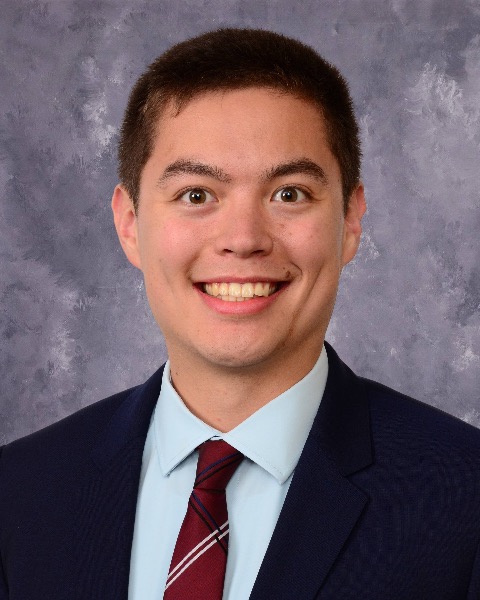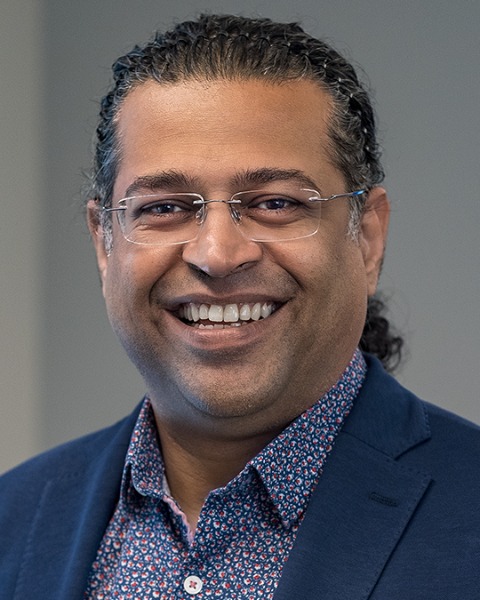SIR 2025
Interventional Oncology
Traditional Poster
61 - Safety and Efficacy of Overlapping Thermal Ablations of Hepatocellular Carcinoma: A Retrospective Review

Maxwell Todd
Medical Student
Saint Louis University School of Medicine, United States- CP
Connor Parrish, BS
Medical Student
St. Louis University School of Medicine, United States - JP
Jeremy Palacio, None
Medical Student
Saint Louis University School of Medicine, United States .jpg)
Deepti Sudhakar, None (she/her/hers)
Medical Student
Saint Louis University School of Medicine, United States- JY
James Yang, None
Medical Student
Saint Louis University School of Medicine, United States - DK
Deepak Kesani, DO
VIR Indepedent fellow
Saint Louis University School of Medicine, United States 
Keith Pereira, MD, DABR, RPVI, ABWM, FSIR
Associate Professor -Tenured
Saint Louis University School of Medicine, United States- JK
Jerome Kao, MD
Physician
Saint Louis University, United States - AM
Aliabdullah Malik, MD
Vascular & Interventional Radiology Faculty
Saint Louis University Hospital, United States - AS
Afsheen Sherwani, MD
Physician
Saint Louis University Hospital, United States - DO
David Owens, DO
Vascular & Interventional Radiology Faculty and Associate Program Director for the Diagnostic Radiology Residency
Saint Louis University, United States - XP
Xavier Packianathan, MD
Physician
Saint Louis University Hospital, United States - RS
Radu Serban, MD
Physician
Saint Louis University Hospital, United States - AM
Aravind Mohandas, MD
Physician
Saint Louis University Hospital, United States 
Millie Liao, DO, MS
attending and faculty
Saint Louis University School of Medicine, United States- KV
Kirubahara Vaheesan, MD
Physician
Saint Louis University, United States
Poster Presenter(s)
Author/Co-author(s)
The purpose of this study was to evaluate the safety and efficacy of overlapping thermal ablations of hepatocellular carcinoma. In our analysis, the average number of probe repositions was 1.2 +/- 0.74. The average tumor dimensions were 2.80 +/- 1.31 cm by 2.25 +/- 1.06 cm. The average ablation zone on follow-up imaging measured 4.02 +/- 1.31 cm by 2.89 +/- 0.99 cm. The included table details the residual disease and local tumor progression rates of the overall patient population as well as the difference between one probe and two or more probes. There were zero instances of tumor seeding noted. 47 patients making up 64 cases went on to receive liver transplants after receiving an ablation. There was no statistically significant difference in pre and post Child-Pugh scores, MELD scores, or AFP lab values. 18 patients were admitted to the hospital within 7 days of the procedure, 12 of which for pain control. There were 0 deaths reported. Overlapping thermal ablation of HCC can be a safe and effective treatment option with either one or multiple probes. The reduced cost basis of utilizing one probe may be overall beneficial given similar results compared to utilizing multiple probes.
Materials and Methods: This is a single center retrospective review of 1,000 cases of thermal ablation of liver tumors between February 2013 and March 2023. Patients were seen pre-procedure in the clinic and viewed in the tumor board to receive approval for treatment. 305 individual instances of hepatocellular carcinoma (HCC) treated by overlapping thermal ablation were identified in 216 separate patients with a mean age of 63.2 +/- 9.2 years. 249 of the cases utilized a single probe and 56 cases utilized at least two separate probes. Overlapping thermal ablation was defined as two or more ablations of the same lesion during the same procedure. This could be achieved with one ablation probe that was repositioned at least one time or with multiple probes that may or may not be repositioned. Tumor location, size, and ablation cavity size were determined on CT or MRI. Residual disease was tracked using the first follow-up imaging. Local tumor progression (LTP) was defined as recurrence of disease in an previously treated area after the first follow-up imaging. MELD, Child-pugh, and AFP lab values were collected from the chart. Readmission rates within 7 days were reviewed per chart.
Results:
Conclusion:


.jpg)